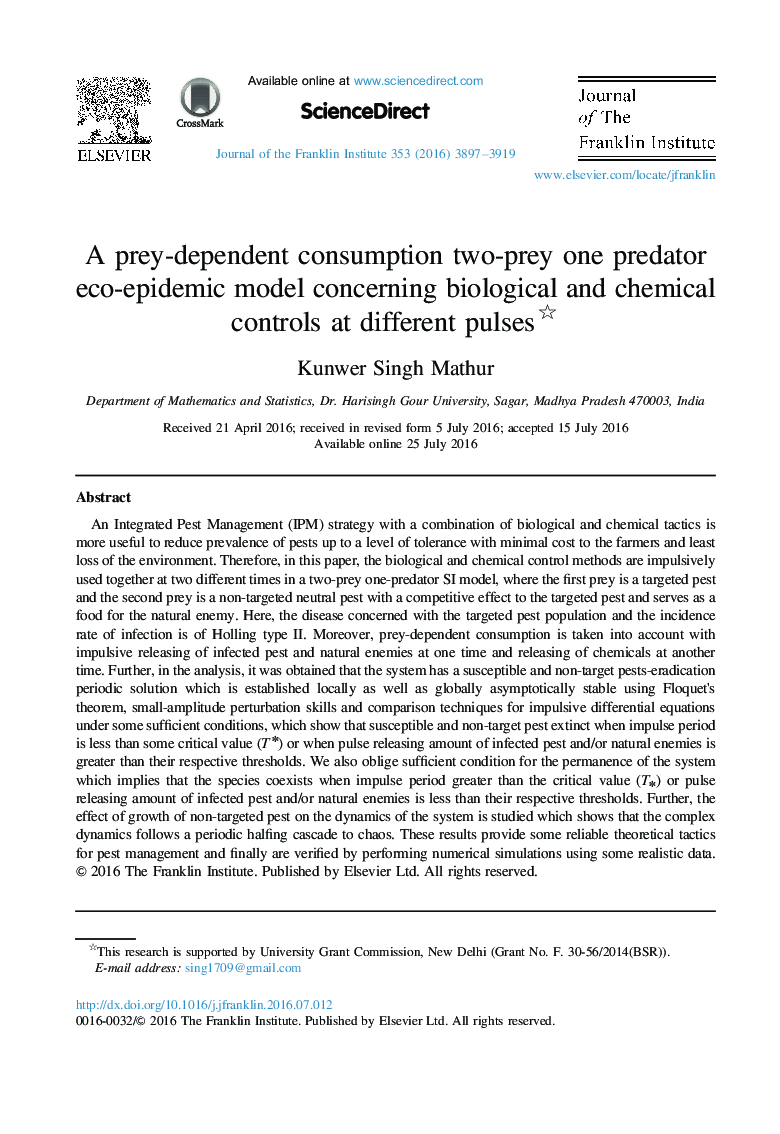| Article ID | Journal | Published Year | Pages | File Type |
|---|---|---|---|---|
| 4974544 | Journal of the Franklin Institute | 2016 | 23 Pages |
Abstract
An Integrated Pest Management (IPM) strategy with a combination of biological and chemical tactics is more useful to reduce prevalence of pests up to a level of tolerance with minimal cost to the farmers and least loss of the environment. Therefore, in this paper, the biological and chemical control methods are impulsively used together at two different times in a two-prey one-predator SI model, where the first prey is a targeted pest and the second prey is a non-targeted neutral pest with a competitive effect to the targeted pest and serves as a food for the natural enemy. Here, the disease concerned with the targeted pest population and the incidence rate of infection is of Holling type II. Moreover, prey-dependent consumption is taken into account with impulsive releasing of infected pest and natural enemies at one time and releasing of chemicals at another time. Further, in the analysis, it was obtained that the system has a susceptible and non-target pests-eradication periodic solution which is established locally as well as globally asymptotically stable using Floquet׳s theorem, small-amplitude perturbation skills and comparison techniques for impulsive differential equations under some sufficient conditions, which show that susceptible and non-target pest extinct when impulse period is less than some critical value (Tâ) or when pulse releasing amount of infected pest and/or natural enemies is greater than their respective thresholds. We also oblige sufficient condition for the permanence of the system which implies that the species coexists when impulse period greater than the critical value (Tâ) or pulse releasing amount of infected pest and/or natural enemies is less than their respective thresholds. Further, the effect of growth of non-targeted pest on the dynamics of the system is studied which shows that the complex dynamics follows a periodic halfing cascade to chaos. These results provide some reliable theoretical tactics for pest management and finally are verified by performing numerical simulations using some realistic data.
Related Topics
Physical Sciences and Engineering
Computer Science
Signal Processing
Authors
Kunwer Singh Mathur,
